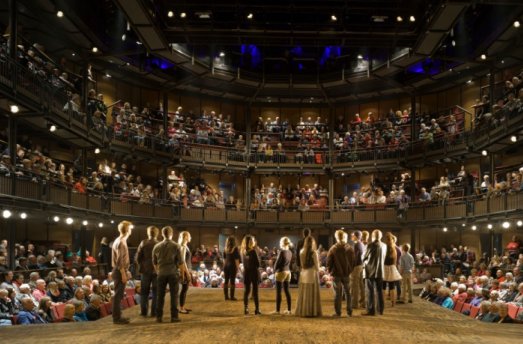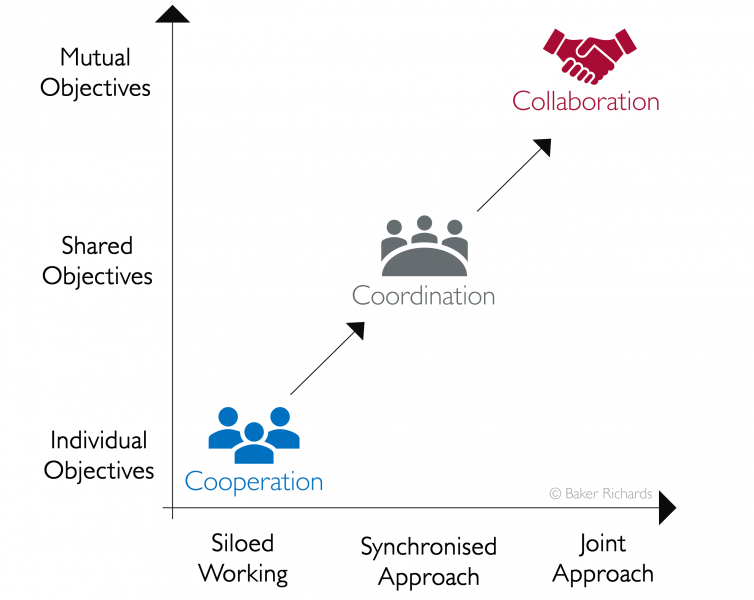
Photo: Peter Cook @ RSC
The challenge of true collaboration
How do we get to the point where we are truly collaborating? Debbie Richards describes a project that sought the benefits of collaboration between fundraisers and marketers.
The Shared Ambition pilot project, managed by the AMA (Arts Marketing Association) in partnership with Baker Richards as part of the Arts Fundraising and Philanthropy programme, was launched in May 2017 to support fundraisers and marketers working together.
As part of the programme, we conducted a practice review to understand the potential benefits of collaboration between fundraisers and marketers and some of the key factors that underpin or undermine success.
First, it is worth exploring what we mean by collaboration. The opposite of collaboration is competition – when an organisation sets up individuals or teams to compete. Departments are managed and judged in relation to distinct targets, which sometimes means competing to generate income from the same pool of people rather than incentivising the best overall outcome.
Even once you get beyond competition, it’s important to recognise that there is a continuum which applies to any cross-departmental working.
 |
At the bottom of the continuum is cooperation. This is when people exchange information solely to achieve their individual goals. This can still achieve better outcomes than competition – and improving communication is certainly a good start if information flows are a problem. But simply informing somebody that something is going to happen isn’t genuine collaboration – and while many people talk a good game about collaborating, many are in fact just cooperating (or coordinating).
Coordination takes cooperation up a level. In this case, teams still typically operate in silos but cross-functional or cross-departmental working is needed to deliver a particular project or activity. Again, this is not a truly joined-up approach because each individual or department has their own tasks and then synchronises their individual pieces of the jigsaw.
True collaboration involves working together in support of mutual objectives or a shared vision. By working together to develop ideas, we can produce something that is greater than the sum of the parts that we get when we coordinate. Innovation comes from embracing different perspectives because we are no longer limited by our own knowledge or experience.
In collaborative organisations, people move up and down the continuum using whichever interaction is required for a given task. There is mutual respect and disagreement is embraced because it stimulates new thinking.
Potential benefits
So, what are the benefits of adopting a collaborative approach? Our practice review found the three most commonly identified potential benefits were as follows:
- Greater overall organisational success: Together, fundraisers and marketers can make a bigger impact in helping an organisation achieve its vision and maximise income.
- A more effective customer-centric approach: Accepting that customers relate to many parts of an organisation’s offer, not a single department, and that strategy and communications need to reflect this to increase lifetime value. Even if, in practical terms, one department ‘owns’ the communications, there remains a need to start from the perspective of the customer and plan a joined-up approach.
- Increased brand value: While marketers and fundraisers may be trying to motivate different behaviours – attending versus donating, for example – what they have in common is building relationships between people and the organisation. Both departments facilitate the exchange of money for value and so increasing perceived value means that an increase in overall engagement becomes more likely.
Of course, there are challenges. Collaboration involves making tough decisions and trade-offs about what to do and what not to do in your organisation’s best interest. It means listening to others and sometimes accepting that you need to back down or give up control to improve the overall outcome. As long as each department is focused on its own distinct targets, the reality is that true collaboration is hard.
Creating change
It’s often the case that a collaborative culture reflects the philosophy of those at the top. If leaders encourage collaboration, a sense of community is created and ideas are regularly shared. But collaboration, by definition, does not have one ultimate leader. Each of us can take responsibility to create change and elicit the behaviours and attitudes that we need from others.
The other challenge commonly identified is a lack of time and resources. But ask yourself if you are making the case for investment or waiting for someone else to do it. Most people are familiar with the adage: “There is nothing permanent except change.” But consider what that means. Imagine an organisation with no website, email or social media – our activity would look very different if it hadn’t evolved since the early 1990s.
Successful organisations don’t stand still but they invest for innovation and growth. Investment needn’t be risky – you can use small-scale tests before making large-scale budget commitments or, in the case of staffing, use a part-time or fixed-term contract to demonstrate a return on investment (ROI).
Through the Shared Ambition programme we’ve been working with marketers and fundraisers to test ideas, to help build a case for investment to drive greater success and to institute cultural change. By learning from one another and working together, we can build great organisations and enable arts and culture to thrive.
Debbie Richards is Director of Baker Richards.
www.baker-richards.com
Involved in the Shared Ambition project were Artichoke, Cast, City of Birmingham Symphony Orchestra, Eden Project, Horniman Museum and Gardens, Liverpool Everyman & Playhouse, National Portrait Gallery, National Theatre, Northern Stage, Royal Opera House, Royal Shakespeare Company and Theatre Royal & Royal Concert Hall Nottingham.
This article also appears as ‘Shared Ambition’ in the AMA’s JAM (Journal of Arts Marketing), Issue 70/Spring 2018.
This article, sponsored and contributed by Baker Richards, is part of a a series sharing insights into how organisations in the arts and cultural sector can achieve their commercial potential.
Join the Discussion
You must be logged in to post a comment.